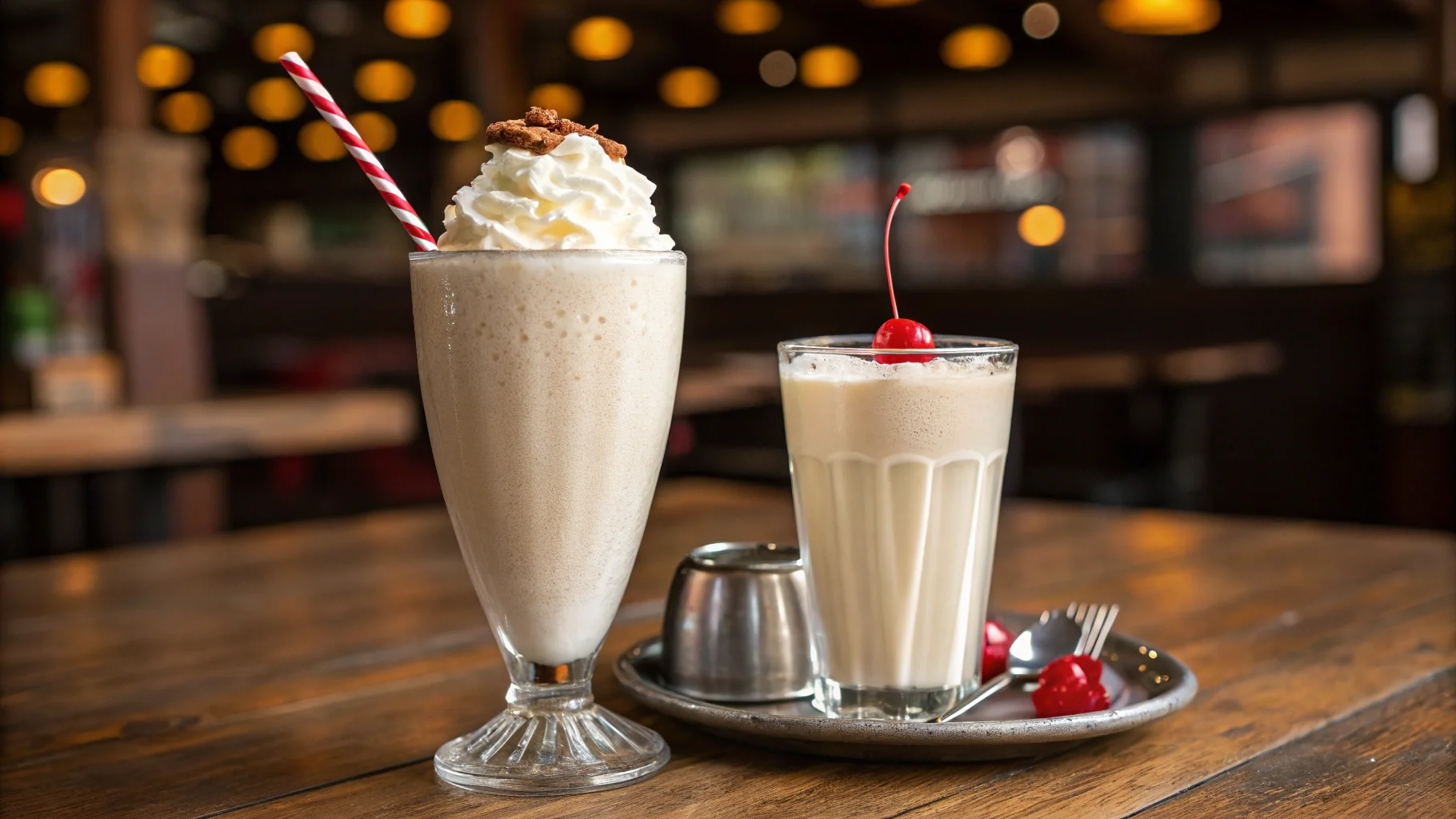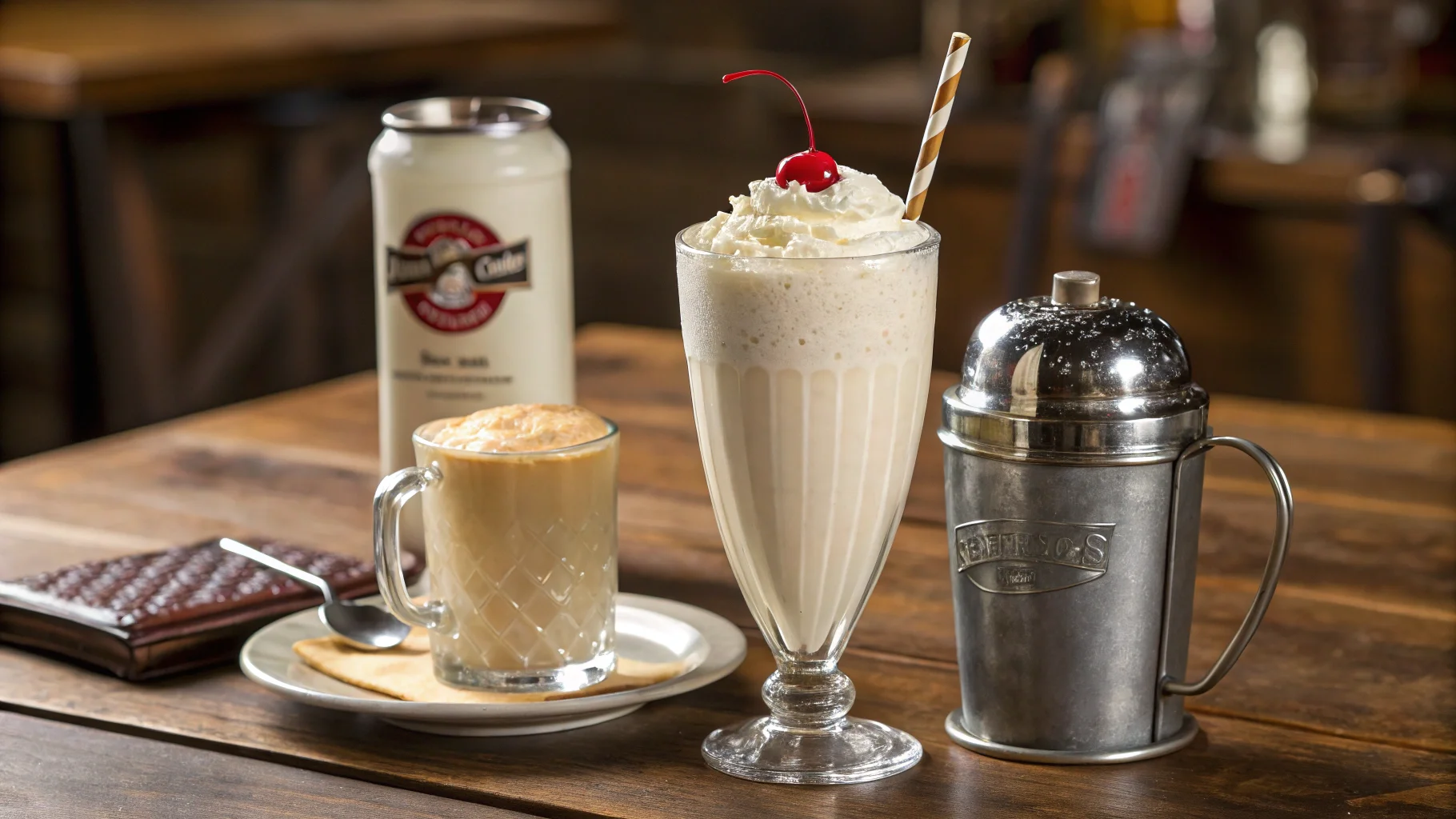Introduction: The Sweet Nostalgia of Dairy Delights
Remember those hot summer afternoons when the ice cream parlor was your sanctuary? The cool blast of air conditioning as you pushed open the door, the gleaming chrome of the soda fountain, and the impossible choice between ordering a classic milkshake or the slightly mysterious malt? For me, those childhood decisions sparked a lifelong curiosity about these frozen treats. Despite their similar appearance, malt and a milkshake offer distinctly different experiences—one that connects generations through taste and tradition. Today, we’re diving into the creamy, sweet world of these beloved beverages to uncover what truly sets them apart and why it matters to your taste buds.
The Fundamental Difference: What Makes a Malt a Malt?
The Essential Ingredient That Changes Everything
At their core, the difference between a malt and a milkshake comes down to one key ingredient: malted milk powder. This distinctive addition transforms an ordinary milkshake into the richer, more complex beverage known as a malt.
- Milkshake base: Ice cream + milk + flavorings
- Malt base: Ice cream + milk + flavorings + malted milk powder
What Exactly Is Malted Milk Powder?
Malted milk powder isn’t just another sweetener—it’s a distinctive ingredient with its own fascinating history and flavor profile.
- Made from malted barley, wheat flour, and evaporated whole milk
- Created in 1887 by London pharmacist James Horlick
- Originally developed as a nutritional supplement for infants
- Contains natural enzymes that break down starches into sugars
- Adds a distinctive nutty, toasty flavor that’s unmistakable
The Taste Test: Flavor Profiles Compared
How Your Taste Buds Can Tell the Difference
The addition of malted milk powder creates a noticeable shift in flavor that distinguishes a malt from a standard milkshake.
Milkshake Flavor Profile:
- Clean, straightforward sweetness
- Prominent ice cream flavor (vanilla, chocolate, strawberry, etc.)
- Creamy texture with no grainy elements
- Flavor tends to be one-dimensional
Malt Flavor Profile:
- Complex sweetness with earthy undertones
- Nutty, toasted notes that complement the ice cream base
- Slightly thicker texture with subtle grain
- Multi-dimensional flavor experience with more depth
The Historical Journey: From Medicine to Mainstream
How Malts and Milkshakes Evolved Through Time
The Surprising Origins of Milkshakes

- 1885: Early milkshakes contained whiskey and were considered medicinal
- 1900s: Evolved into a healthful drink with milk, flavored syrups, and sometimes eggs
- 1922: Walgreens employee Ivar “Pop” Coulson added ice cream, creating the modern milkshake
- 1930s: The electric blender revolutionized milkshake production, making them smoother and more popular
The Rise of the Malt Shop
- 1920s: Malted milk beverages gain popularity in pharmacies and soda fountains
- 1940s-1950s: The golden era of the malt shop—teenage hangout spots centered around jukeboxes and malted milkshakes
- 1950s: Malts became symbolic of American youth culture, featured prominently in movies and music
Nutritional Comparison: What’s in Your Cup?
Calorie Counts and Nutrient Profiles
Both treats are indulgent, but there are some differences worth noting:
| Component | Average Chocolate Milkshake (16 oz) | Average Chocolate Malt (16 oz) |
|---|---|---|
| Calories | 540 | 590 |
| Fat | 17g | 18g |
| Protein | 10g | 13g |
| Carbs | 87g | 95g |
| Calcium | 35% DV | 40% DV |
| Vitamin D | 15% DV | 20% DV |
| B Vitamins | Minimal | Moderate amounts |
Note: Exact values vary by recipe and serving size. Malts typically contain slightly more calories and nutrients due to the added malted milk powder.
The Nutritional Edge of Malted Milk
- Contains B vitamins, including niacin and riboflavin
- Offers minerals like phosphorus and potassium
- Provides additional protein compared to plain milkshakes
- Historically valued for its digestive benefits
Making Your Own: Classic Recipes to Try at Home
The Perfect Classic Vanilla Milkshake
Ingredients:
| Ingredient | Amount |
|---|---|
| Vanilla ice cream | 3 scoops (about 1½ cups) |
| Whole milk | ¼ cup |
| Pure vanilla extract | ¼ teaspoon |
| Whipped cream | For topping |
| Maraschino cherry | 1 (optional) |
Instructions:
- Place ice cream, milk, and vanilla extract in a blender
- Pulse until ingredients are just combined but still thick
- Pour into a chilled glass
- Top with whipped cream and a cherry if desired
- Serve immediately with a straw and long spoon
The Classic Chocolate Malt
Ingredients:
| Ingredient | Amount |
|---|---|
| Chocolate ice cream | 3 scoops (about 1½ cups) |
| Whole milk | ¼ cup |
| Malted milk powder | 3 tablespoons |
| Chocolate syrup | 1 tablespoon |
| Whipped cream | For topping |
| Chocolate shavings | For garnish |
Instructions:
- Combine ice cream, milk, malted milk powder, and chocolate syrup in a blender
- Blend until smooth and thick, about 30 seconds
- Pour into a chilled malt glass
- Top with whipped cream and chocolate shavings
- Serve with a straw and long spoon
Regional Variations: How Different Areas Celebrate These Frozen Treats
Unique Regional Twists on Malts and Milkshakes
Northeast
- Frappe: New England’s version of a milkshake, typically thicker
- Black and White: New York classic combining chocolate syrup and vanilla ice cream
Midwest
- Boston Cooler: Detroit specialty combining vanilla ice cream with ginger ale
- St. Louis Concrete: Ultra-thick milkshake that can be turned upside down without spilling
South
- RC Cola Milkshake: Southern treat combining cola with vanilla ice cream
- Buttermilk Milkshake: Tangy southern variation using cultured buttermilk
West Coast
- Date Shake: Palm Springs specialty featuring date puree
- Avocado Milkshake: California fusion treat with healthy fats
FAQ: Everything You Wanted to Know About Malts and Milkshakes
What’s the difference between a malt and a milkshake in terms of texture?
A malt typically has a slightly thicker, grainier texture compared to the smoother consistency of a traditional milkshake, due to the addition of malted milk powder.
Can you make a malt without a blender?
Yes, you can make a malt without a blender by using a milkshake mixer or even a whisk, though it requires more effort to fully incorporate the malted milk powder and achieve the proper consistency.
Is malted milk powder the same as Ovaltine?
While similar, they’re not identical—Ovaltine is a brand name product that contains malted milk powder along with additional ingredients like cocoa and various vitamins and minerals, whereas pure malted milk powder contains only malted barley, wheat flour, and milk.
What’s the difference between a malt and a milkshake in terms of calories?
A malt typically contains about 50-100 more calories than a comparable milkshake due to the addition of malted milk powder.
Can you make a dairy-free version of a malt?
Yes, you can create dairy-free malts using non-dairy ice cream alternatives, plant-based milk, and barley malt extract instead of traditional malted milk powder (which contains dairy).
Conclusion: Which Should You Choose?
The choice between a malt and a milkshake ultimately comes down to personal preference and what flavor experience you’re seeking. If you enjoy a straightforward, sweet frozen treat that lets the ice cream flavor shine, a milkshake might be your perfect match. However, if you appreciate complex flavors with nutty, toasted notes and a hint of nostalgia, you can’t beat a classic malt.
Whichever you choose, both of these frosty confections continue to evolve while maintaining their place in American food culture. From their medicinal origins to their current status as beloved dessert drinks, malts and milkshakes remind us that sometimes the simplest pleasures are the most enduring.
So next time you’re at the counter trying to decide what’s the difference between a malt and a milkshake, remember—it’s that magical spoonful of malted milk powder that transforms one into the other, creating two distinct but equally delicious experiences.

